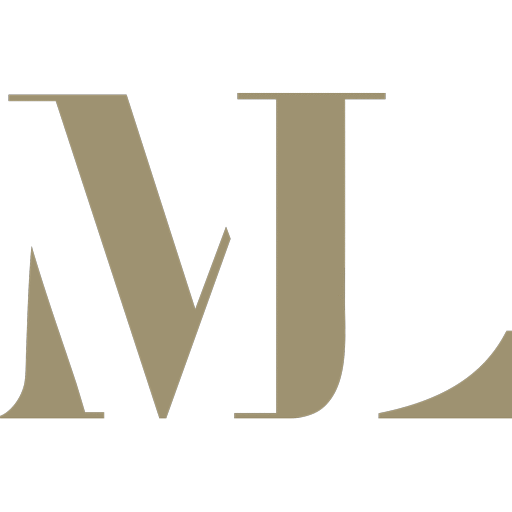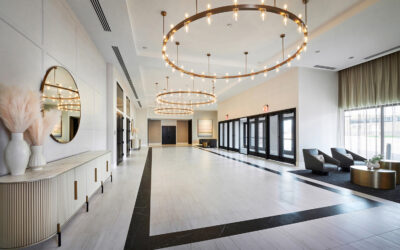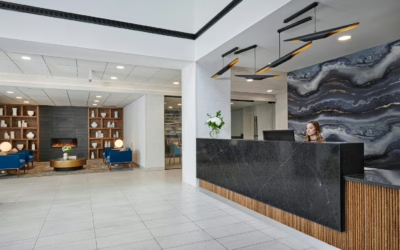The Flight to Quality in Multifamily Housing
Redefining Value: What Today’s Tenants Want and Tomorrow’s Assets Require
Since the onset of the pandemic, a decisive shift has been underway across nearly every corner of the real estate industry: a decisive flight to quality. This trend has accelerated rapidly in multifamily housing as tenants—whether students, young professionals, families, or seniors—reassess what they expect from their living environments. No longer is location alone enough to compete. In today’s market, design, amenities, technology, and overall experience are now as important as square footage or rental rates.
This flight to quality isn’t just aesthetic—it’s strategic. Their standards evolved as renters gained more flexibility to live, work, and socialize remotely. Modern tenants expect spaces that support wellness, community, and convenience. Buildings that once relied solely on proximity to employment centers now compete based on the quality of their lobbies, fitness centers, unit layouts, and even pet amenities. In response, developers and investors are rethinking everything—from ground-up construction to value-add renovations—as quality becomes a key differentiator that directly impacts occupancy, rent premiums, and long-term value.
At ML Group, we’ve seen this transformation firsthand. As a design-build firm focused on repositioning and renovating multifamily housing, developers and owners often bring us in when they realize that simply “refreshing” a property isn’t enough. Increasingly, we’re engaged at the point of acquisition—when a new owner or investor takes control of an underperforming asset with the explicit intention of repositioning it to meet modern expectations. Whether elevating curb appeal, enhancing unit functionality, or reimagining amenity spaces, strategic imperatives are driving these projects: aligning with the flight to quality and unlocking additional asset value. Our integrated approach—combining architecture, interior design, and construction—enables us to transform these properties efficiently while maximizing return on investment.
This article explores the drivers behind the flight to quality in multifamily housing and how different segments—from market-rate and mixed-income to student and senior housing—are responding. We’ll also examine how design-build strategies are uniquely suited to help developers navigate this shift, balancing speed and sophistication while enhancing the bottom line. With real case studies from ML Group’s portfolio, we’ll illustrate how thoughtful design and strategic execution are turning outdated buildings into market-leading residences that resonate with the modern renter.
Drivers of Flight to Quality in Multifamily Housing
A single factor doesn’t drive the flight to quality in multifamily housing—it results from a seismic shift in how people live, work, and evaluate their homes. Post-pandemic, the value tenants place on their physical environments has dramatically increased, and in many cases, this shift has outpaced the pace of real estate investment and redevelopment. From health-conscious living to lifestyle-driven decisions, the demand for higher-quality housing is shaping where and how capital is deployed.
Post-Pandemic Shifts
The COVID-19 pandemic forced renters to spend more time at home—and that experience fundamentally changed expectations. Cleanliness, air quality, natural light, and wellness-focused design are now baseline requirements. Further, shared spaces like fitness centers, lounges, and rooftop decks must feel safe and aspirational. Properties that promote physical and mental well-being are drawing tenants, making biophilic design, improved HVAC systems, and access to outdoor amenities increasingly important.
Remote and hybrid work models have further altered what “home” means. Living spaces now double as offices, and renters seek flexible layouts with dedicated work areas or co-working amenities. This shift has introduced new programming demands—like soundproof phone booths, business centers, and private conference rooms—that developers can no longer ignore. Buildings that cater to this new way of life stand out in the marketplace and achieve more substantial occupancy and retention.
Economic and Demographic Trends
Broader demographic shifts are reinforcing this demand for quality. Migration to suburban and Sunbelt markets—often driven by affordability, climate, and lifestyle—has opened the door to new developments prioritizing thoughtful design over sheer density. In these markets, renters aren’t just looking for four walls; they’re seeking a curated living experience that balances comfort with community.
At the same time, Millennial and Gen Z renters are placing a premium on experiential living. This generation is less focused on ownership and more driven by amenities, aesthetics, and values. Innovative technology, sustainable materials, and hospitality-inspired interiors aren’t “nice-to-haves.“ Tenants expect them. Developers who fail to respond to these preferences risk falling behind.
Lifestyle Preferences
Across all renter demographics, lifestyle-driven features are playing a more significant role in decision-making. High-end gyms, pet amenities, rooftop lounges, and Instagram-worthy common spaces are becoming standard, even in workforce and mixed-income housing. For owners and operators, the challenge—and opportunity—is to balance these features with cost-effective execution.
This evolving landscape is exactly where ML Group thrives. Our integrated design-build process helps clients understand what today’s renters want—and how to deliver it in a way that enhances both experience and asset performance.
Market Segments and Quality Trends
While the flight to quality is a unifying trend across the multifamily housing sector, how it shows up and is addressed varies dramatically by market segment. From luxury to affordable housing and from student living to senior residences, each segment carries a unique mix of expectations, constraints, and opportunities. Developers and investors who understand the nuances can tailor their strategies to create real differentiation—and long-term value.
Market-Rate Apartments
In the competitive world of market-rate housing, quality is no longer a premium—it’s the baseline. Renters expect refined finishes, seamless technology integration, and a hospitality-inspired experience. High ceilings, natural light, smart home systems, and well-thought-out kitchens are often minimum requirements, especially in urban submarkets.
Take The Archer in Chicago’s Gold Coast. Originally built as a 1929 hotel but converted into apartments in the 1980s, ML Group helped transform it into a boutique apartment building that blends historic charm with contemporary living. The result? A curated experience where preserved architectural details meet upgraded residences and luxurious amenity spaces like a rooftop deck and a fitness center. It’s the kind of reinvention that speaks directly to the post-pandemic renter: stylish, convenient, and experience-driven.

Amenity Space at The Archer, located at 1211 N LaSalle, in Chicago’s Gold Coast neighborhood.
Mixed-Income Housing
Mixed-income housing has evolved far beyond the standalone workforce developments of a decade ago. In cities like Chicago—and increasingly in other municipalities—new market-rate and luxury developments are often required to dedicate a percentage of units to affordable or subsidized housing. These inclusionary zoning policies typically mandate that developers set aside around 20% of units at below-market rates, with allocations for different AMI (Area Median Income) thresholds. In many cases, a portion may also be reserved for public housing residents through partnerships with housing authorities and HUD.
What’s notable and challenging for developers is that these affordable units must be randomly dispersed throughout the building. That means there’s no separating market-rate from affordable units, either physically or in design quality. Every unit must meet the same design and construction standards, and all residents must have equal access to amenities and common areas.
This is where thoughtful, integrated design becomes essential. At ML Group, we’ve helped clients successfully navigate these dynamics by using value-driven construction strategies and hospitality-inspired design elements that elevate the entire resident experience—without driving costs beyond feasibility. Our design-build approach allows us to optimize layouts, strategically allocate finishes, and deliver inclusive spaces that feel high-quality and equitable.
We design shared amenities like lounges, co-working spaces, and fitness centers to unite residents, regardless of income bracket. When thoughtfully executed, these spaces foster community, increase retention, and contribute to the long-term financial health of the property.
Senior Housing
For today’s seniors, aging in place means more than wide hallways and grab bars. Wellness and lifestyle now define quality. That includes dining experiences, fitness areas, spa-like lounges, and vibrant social spaces.
At Fountain View at Logan Square in Philadelphia, ML Group reimagined a 24-story high-rise into a luxury senior living community with amenities like a sky lounge, piano bar, and wellness-focused layouts. The result is not just a place to live—it’s a destination that reflects evolving senior expectations and delivers operational performance.

The piano bar at the Fountain View at Logan Square in Philadelphia, PA.
Student Housing
With hybrid learning and digital-first lifestyles, students are prioritizing community, connectivity, and flexibility. Properties need to support group study, quiet focus, and spontaneous interaction.
ML Group’s Fox & Hounds student housing project exemplifies this trend. Through vibrant lounges, built-in charging stations, and flexible communal spaces, we helped transform a dated student housing facility into a hub for connection and comfort.
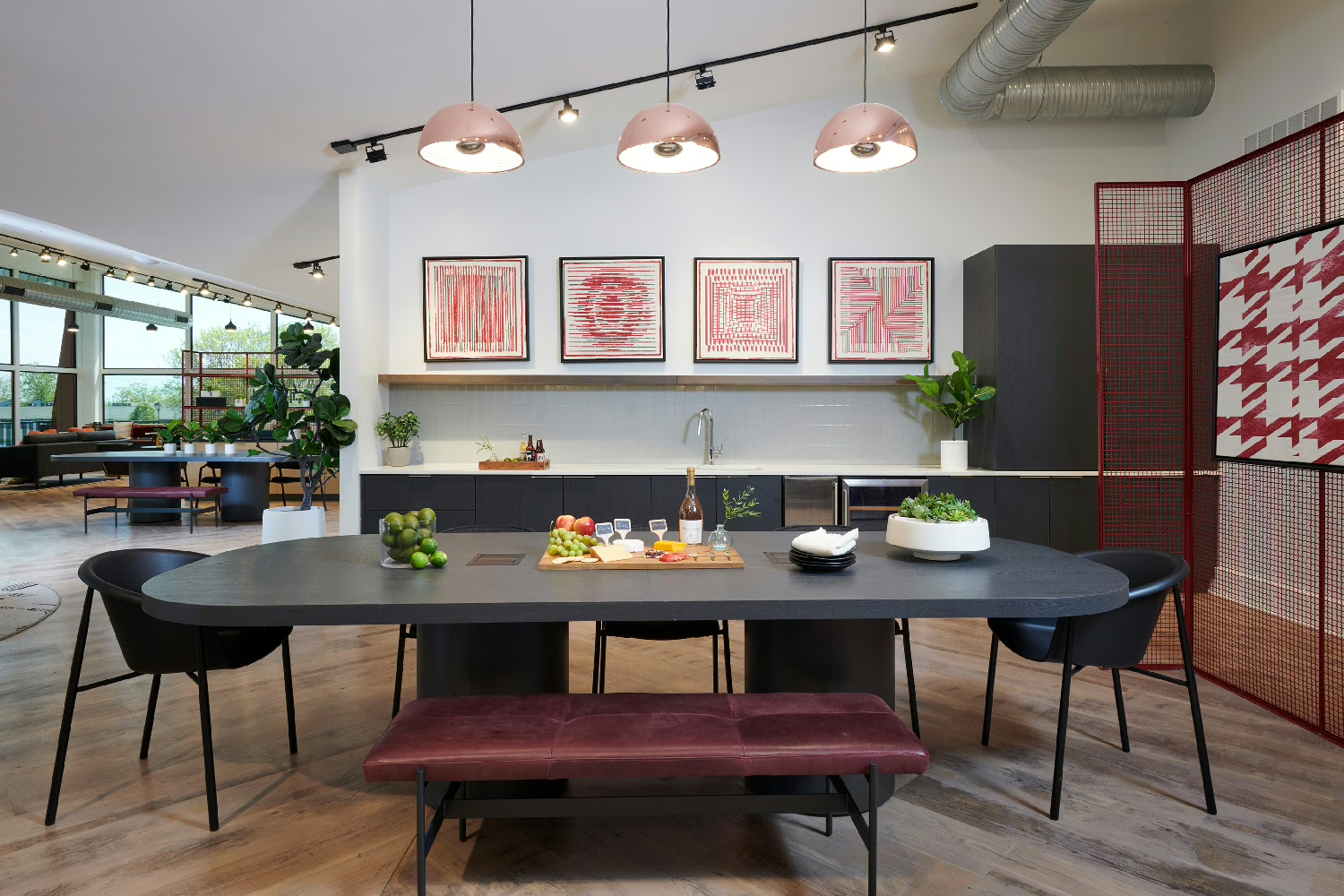
Clubhouse at Fox & Hounds in Columbus, OH
Affordable and Public Housing
The most complex segment, affordable and public housing, still feels the pressure of the flight to quality, but it operates within stricter financial parameters. Here, better design standards and creative programming can vastly improve livability, even when budgets are lean.
Cities are increasingly pushing for higher standards and developers who deliver thoughtful, human-centered designs. This results in tenants rewarding operators and developers with better satisfaction rates and reduced turnover. ML Group’s expertise in durable material selection, efficient layouts, and multipurpose community spaces makes quality achievable—even under constraint.
Commercial-to-Residential Conversions
One of the most talked-about trends in post-pandemic real estate is the adaptive reuse of commercial properties—especially office buildings—into multifamily housing. As urban cores across the U.S. grapple with rising office vacancy rates and growing housing shortages, these conversions offer a potential win-win. For developers and municipalities alike, they represent an opportunity to revitalize downtowns, increase housing supply, and create vibrant, mixed-use environments that better reflect today’s live-work realities.
However, converting a commercial structure into a residential one is far from straightforward. The challenges are significant: deep floor plates, outdated mechanical systems, code compliance hurdles, and zoning limitations often make these projects technically and financially complex. Add in the expectation for modern amenities, efficient layouts, and high-quality finishes, and it becomes clear that commercial-to-residential conversions require more than creative vision—they demand a profoundly strategic and integrated approach.
At ML Group, we’ve helped guide clients through these exact challenges. One standout example is K Square Apartments in Chicago’s Old Town—a former condo building that we helped reimagine into market-rate apartments with vibrant amenities and a fresh identity. Although not a traditional office building, the project posed many of the same spatial and regulatory challenges common to commercial conversions: rigid floorplans, outdated infrastructure, and limited natural light in interior zones.
Our design-build team tackled the transformation, focusing on usability and value creation. By strategically reclaiming underutilized spaces—like oversized mechanical rooms and resident storage—we created new amenity areas that brought energy and appeal to the property. Structural updates, including new windows and façade work, enhanced aesthetics and livability. Most importantly, early collaboration between design, construction, and ownership allowed us to align every decision with budget constraints and market goals.
The success of K Square illustrates a broader truth: adaptive reuse projects benefit significantly from integrated teams that can balance architectural creativity with construction pragmatism. At ML Group, we’re not just executing these transformations—we’re often involved early in the process, working alongside investors and developers to evaluate feasibility, pricing, and design strategies before the finalization of deals. We’re currently engaged with several clients exploring commercial-to-residential conversions, helping them navigate the complex web of building assessments, entitlement reviews, and early-stage underwriting.
While some of these projects are already moving forward, many are still deep in the weeds of zoning approvals and municipal review—a process that can be lengthy and unpredictable. From rezoning applications to code compliance planning and financial modeling, it takes a coordinated effort across architects, contractors, developers, legal teams, and city agencies to bring these ideas to life. That’s why having a design-build partner who understands the landscape is critical.
Ultimately, these conversions offer enormous potential—not just for investors but for cities and residents alike. When done well, they breathe new life into underutilized buildings, create much-needed housing, and exemplify the flight to quality: transforming outdated commercial assets into modern, high-performance living environments that are built to endure.
Design-Build Strategies for Flight to Quality
In a real estate environment where quality is no longer optional, the ability to move fast without compromising design or performance has become a competitive advantage. That’s where the design-build model shines. Rather than managing separate teams for architecture, interior design, and construction, owners who partner with integrated firms can align quality, cost, and speed, which is often at odds with traditional delivery models.
At ML Group, our Strategize. Imagine. Transform. approach combines front-end planning, design innovation, and construction execution into one cohesive process. This approach allows us to identify value opportunities early, eliminate disconnects between design intent and buildability, and deliver high-quality environments that stand out in the market. Especially in the current climate, where the flight to quality is reshaping tenant expectations, our clients are leaning on this integrated strategy to elevate their assets in ways that directly impact leasing performance and long-term value.
Across our multifamily projects, a clear set of design elements consistently drive tenant appeal and asset differentiation. Smart FF&E selection, open layouts, and natural light optimization enhance the sense of space—particularly in adaptive reuse projects where layouts may be constrained. Acoustic performance, intuitive wayfinding, and smart technology integration are also critical to creating environments that feel both premium and functional.
Case in point: 1250 LaSalle Apartments, where ML Group led a high-rise residential building renovation in Chicago. By focusing on high-impact upgrades—like a resort-style rooftop deck, thoughtfully curated community spaces, and modernized units with premium finishes—we helped reposition the property to serve modern renters better while boosting its long-term value. Through creative solutions like the Baja Shelf pool (a resort-style element designed without the complications of a full-scale pool), we were able to deliver a luxury-like experience with more efficient construction and lower long-term liabilities.
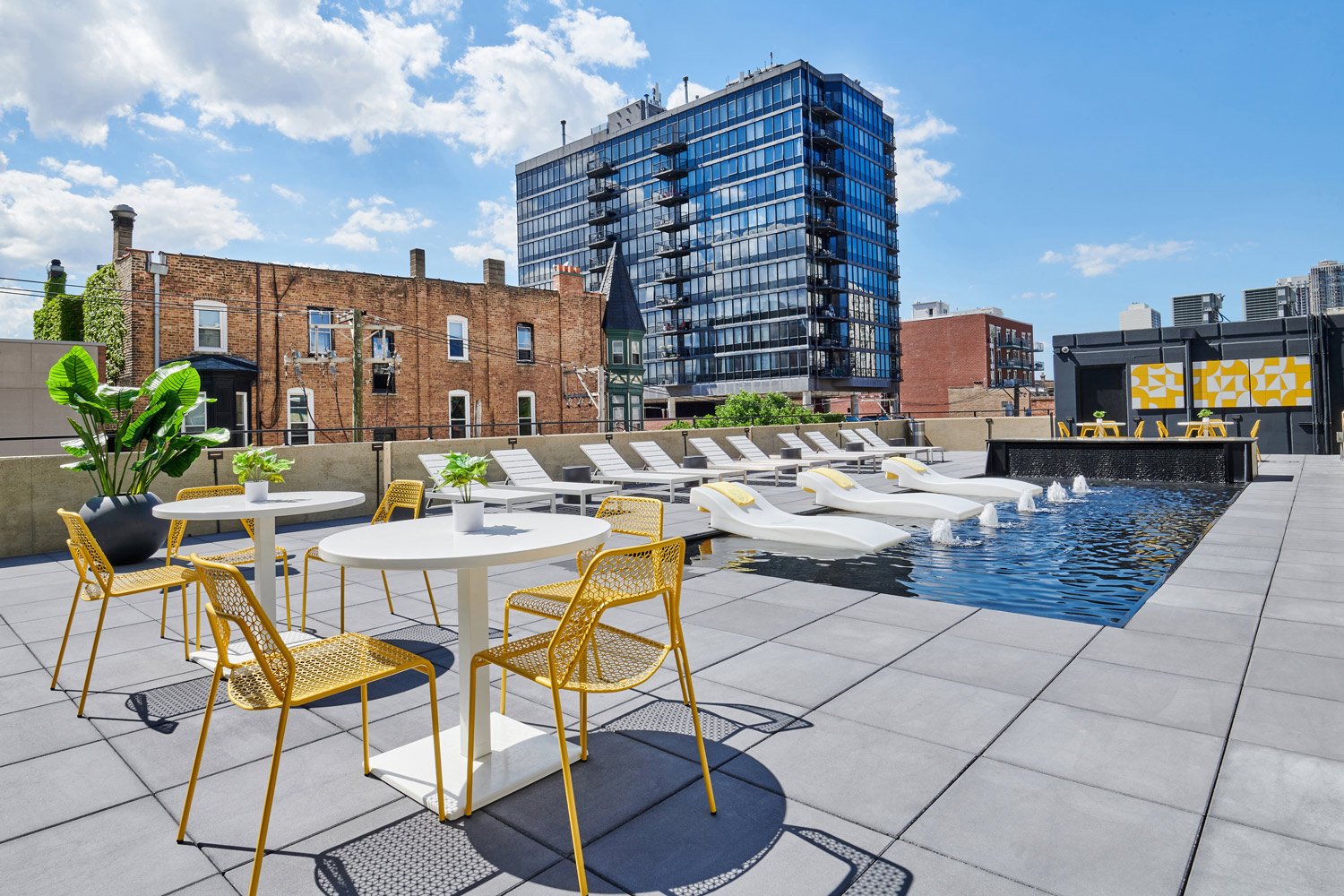
The Baja shelf pool on the amenities roof deck at 1250 N. LaSalle.
Sustainability is also an increasingly important part of the quality equation. Energy-efficient systems, sustainable materials, and water-saving features are no longer niche requests—they define a high-performing building. Our design-build process enables us to assess ROI-driven sustainability strategies early, allowing clients to integrate green features that make sense financially and operationally.
In short, quality is not just high-cost finishes and furnishings—it’s about thoughtful execution. And with rising tenant expectations and market pressures, integrated design-build delivery isn’t just efficient—it’s essential.
Financial Implications for Investors and Developers
For investors and developers, the flight to quality isn’t just a design trend—it’s a bottom-line imperative. Properties that offer better aesthetics, intelligent layouts, and more engaging amenities consistently outperform in occupancy, rental premiums, and long-term asset value. As tenant expectations rise, buildings that fail to meet the new standard risk becoming obsolete faster, while those that deliver thoughtful, experience-driven environments are increasingly positioned as top-tier assets within their submarkets.
The most notable financial advantage of investing in quality is the ability to command higher rents. From luxury high-rises to repositioned workforce housing, units in well-designed, well-located buildings with modern finishes and lifestyle amenities consistently lease up faster and at higher rates. In many markets, the premium on upgraded units more than offsets the additional upfront investment—especially when those upgrades are executed strategically through a design-build model that tightly manages cost, schedule, and scope.
Take our work at 1250 LaSalle and K Square Apartments—two multifamily repositioning projects, among many more, where ML Group used targeted design and amenity enhancements to elevate tenant experience without overcapitalizing the properties. In both cases, upgrades like reallocating under-utilized spaces, refreshing rooftop decks, modifying unit layouts, enhancing high-impact common areas, and curating finishes helped reposition the buildings into a more competitive tier. The result was increased leasing velocity and a meaningful increase in net operating income (NOI) and projected asset value.
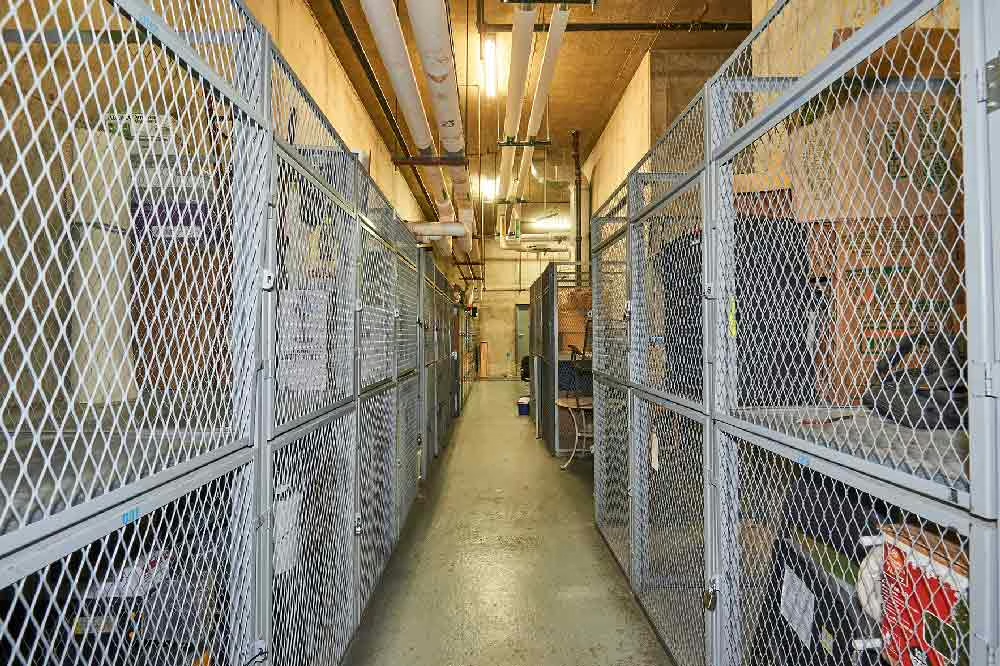
The old storage spaces utilized by the previous condo owners were converted into a community lounge space at 1250 La Salle.
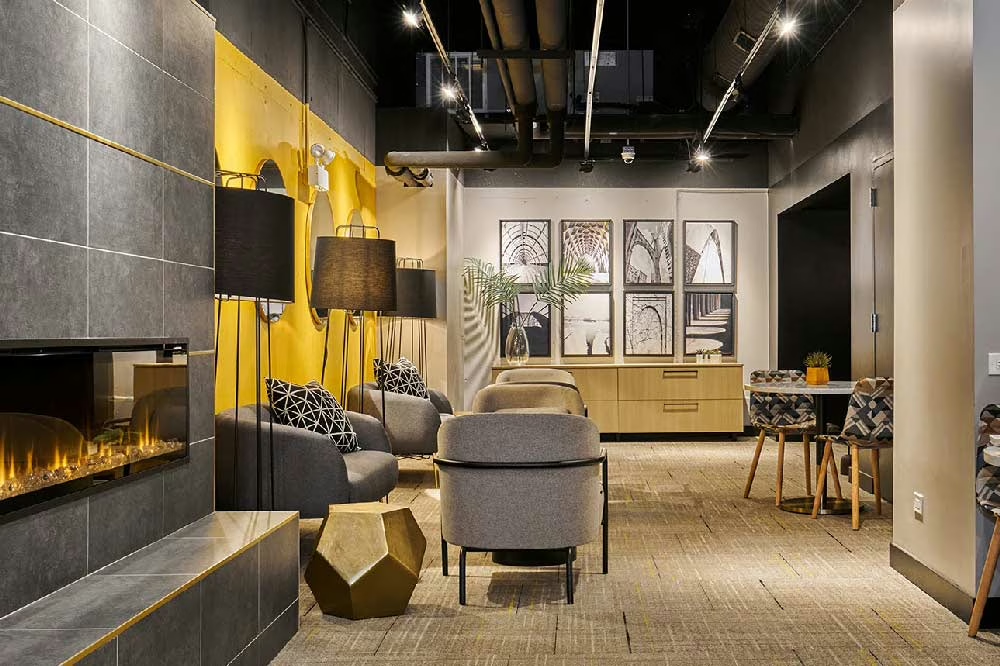
The new community lounge at 1250 LaSalle.
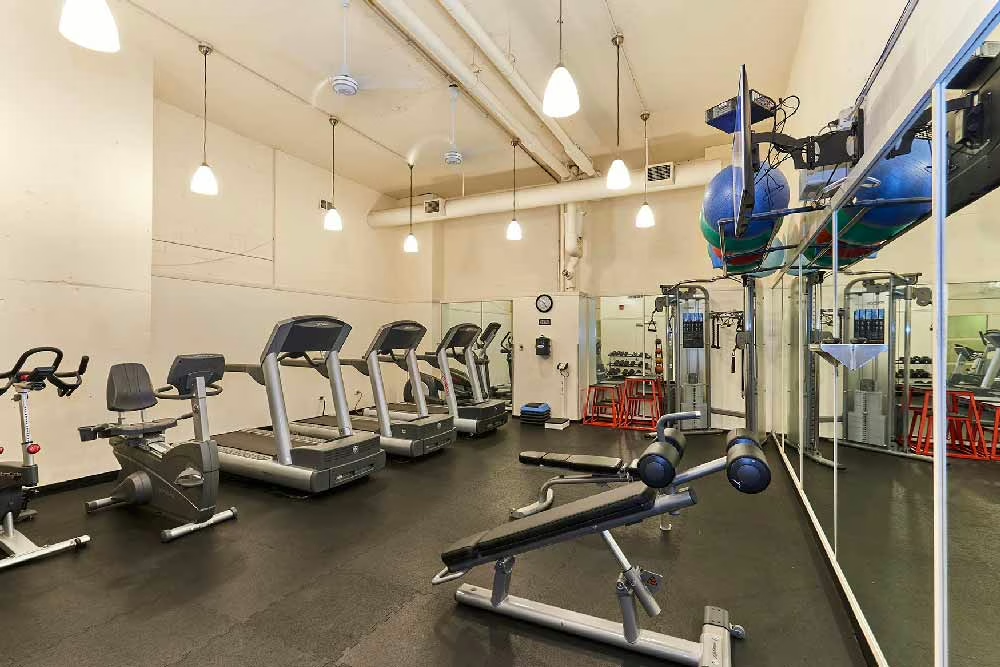
The old gym at the K Square Apartments had no windows and was essentially an extra room in the facility with white painted walls, gym equipment, and mirrors.
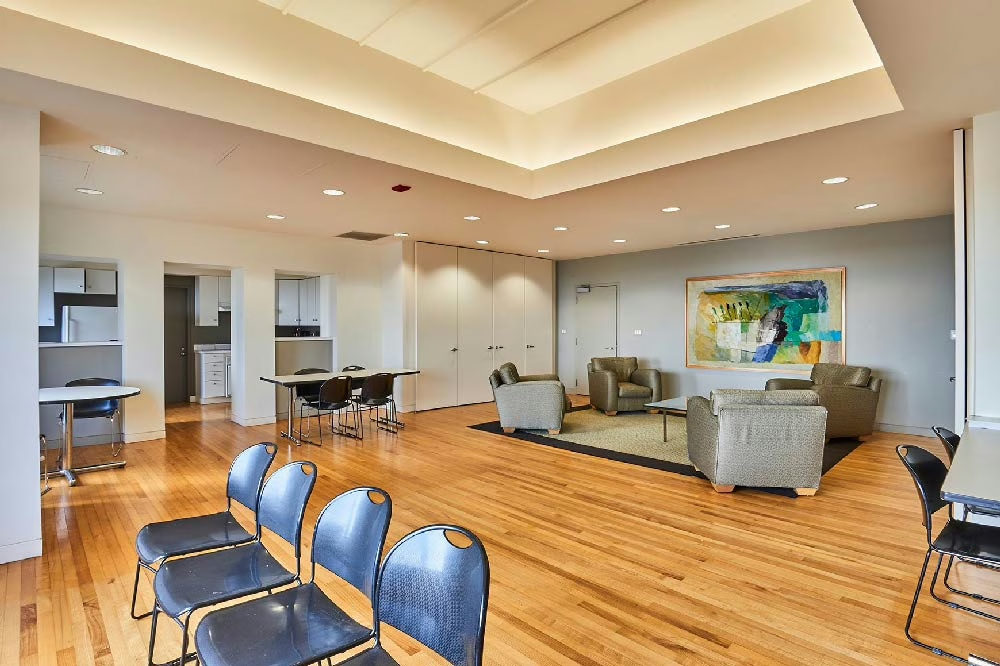
The old community lounge at K Square was outdated and underutilized.
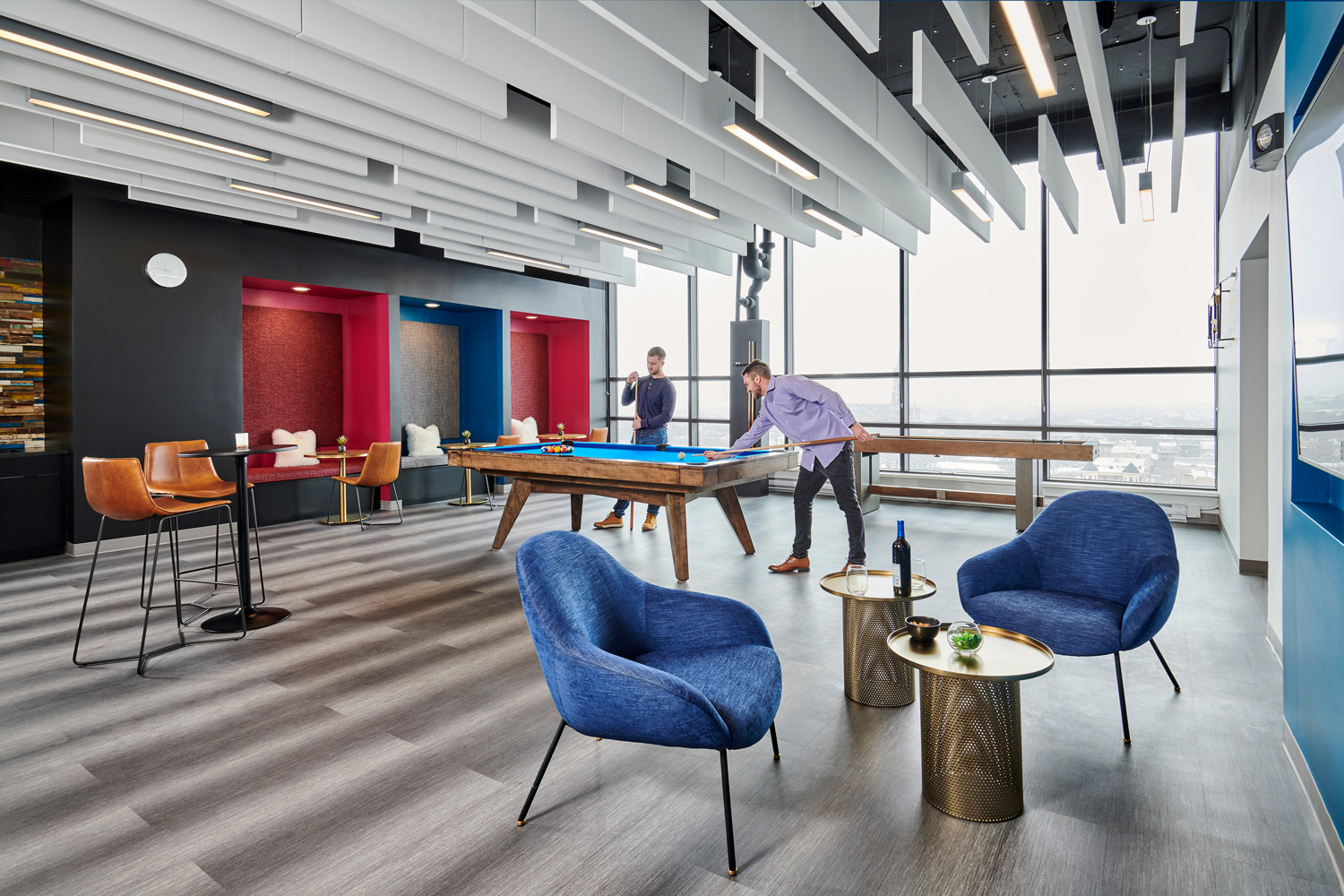
ML Group created exterior and interior openings to expand the community lounge and give the space additional daylight in the previously underutilized gym at the K Square Apartments.
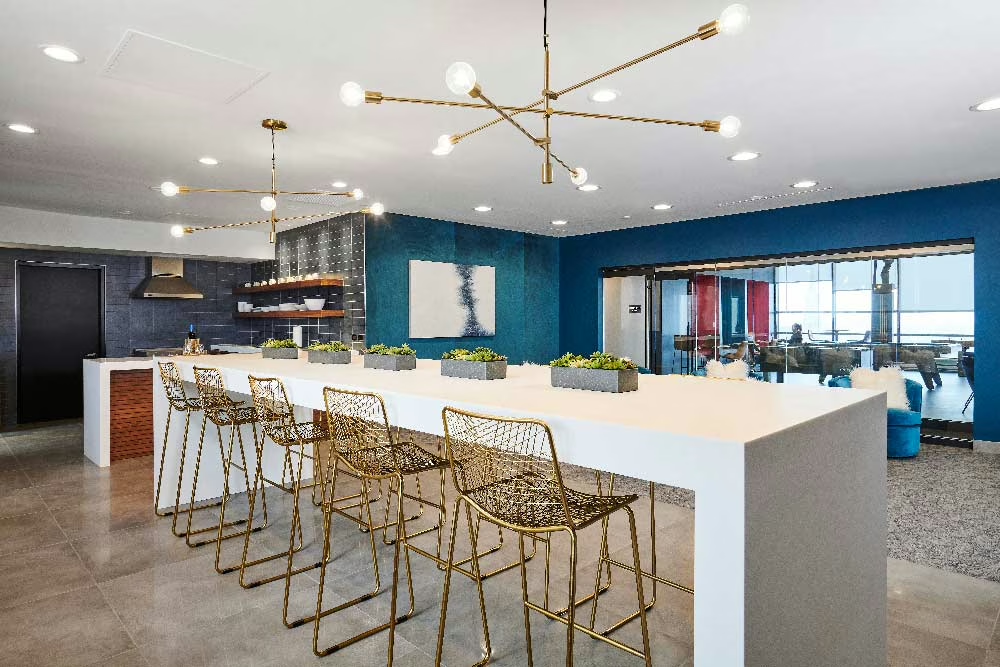
New interior and exterior glass openings and strong interior design drastically improved the new community lounge space at the K Square Apartments in Chicago’s Old Town.
However, quality doesn’t come without cost considerations. Construction pricing remains volatile, and materials, labor, and permitting delays continue to impact budgets. That’s where the design-build approach becomes a financial differentiator. By engaging architecture, interior design, and construction under one roof, developers gain real-time visibility into cost impacts as decisions are made. This process eliminates expensive redesigns and change orders, allowing owners to prioritize investments with the greatest financial return.
At the same time, durable construction and efficient layouts lead to lower long-term operating costs. From energy-efficient systems to easy-to-maintain finishes, quality isn’t just about what looks good on day one but what holds up over time. For institutional investors and long-hold owners, that durability directly supports stronger performance over the entire investment lifecycle.
In an increasingly crowded and competitive housing market, the smartest capital is flowing toward properties that stand out—not just in their design but in their financial fundamentals. With the right partner and a strategy rooted in quality, design becomes a powerful lever to drive resident satisfaction and investor returns.
Conclusion: Quality as the New Standard
Across the multifamily housing spectrum—from market-rate and mixed-income to student and senior living—the flight to quality is no longer an emerging trend; it’s the new industry standard. In the wake of the pandemic, tenants are looking beyond price and square footage. They want design that inspires, amenities that enhance daily life, and buildings that reflect people’s lives today. The stakes are high for developers, investors, and operators: those who elevate their properties to meet these evolving expectations stand to attract better tenants, command higher rents, and improve long-term asset performance.
While each segment of multifamily housing has its own drivers and constraints, the consistent throughline is that design and execution now directly influence financial outcomes. Amenities once considered “premium”—like co-working lounges, rooftop terraces, pet spas, and wellness-oriented fitness centers—are increasingly baseline expectations. Equally important are the less visible elements: functional layouts, natural light, thoughtful acoustics, and finishes that balance durability with style.
As municipalities introduce zoning requirements that encourage inclusionary housing and push for higher livability standards, developers must also navigate increasing regulatory complexity. Commercial-to-residential conversions, mixed-income mandates, and the blending of affordable and market-rate units all require smart planning and seamless delivery to avoid costly delays or design compromises.
That’s where ML Group brings distinct value. Our integrated design-build model helps multifamily stakeholders respond to these shifting demands with clarity, creativity, and speed. By unifying strategy, architecture, interior design, and construction under one roof, we streamline the process and allow clients to make smarter, faster decisions—without sacrificing quality. Our work across a wide range of multifamily typologies demonstrates how thoughtful reinvention can meet today’s tenant expectations and position properties for long-term success.
The message to the market is clear: quality is no longer optional—it’s a requirement. And while achieving that quality requires upfront intention, the payoff is significant. As tenants become more discerning and the bar for livability rises, the properties that combine great design with operational and financial performance will lead the pack.
more Thought Leadership
Flight to Quality in Hospitality Spaces
The Flight to Quality in Hospitality DesignDrivers Behind the Flight to Quality in Hospitality DesignSince the onset of the COVID-19 pandemic, flight to quality has moved beyond real estate jargon to become a guiding principle across multiple industries. In the...
The Flight to Quality in Post-Acute Healthcare design
The Flight to Quality in Post-Acute Healthcare DesignHow Design Is Transforming Skilled Nursing Facilities and Why Hospitality-Inspired Design Is the New Standard in Post-Acute and Skilled Nursing EnvironmentsIn the wake of the pandemic, the “flight to quality” has...
Flight to Quality: A New Era of Quality in Commercial Office Real Estate
A New Era of Quality in Commercial Office Real Estate and the workplaceRedefining Value: What Today’s Tenants Want and Tomorrow’s Assets RequireThe commercial office market is undergoing one of the most profound transformations in recent memory. At the heart of this...
contact
If you’re a developer, investor, or operator navigating these challenges, ML Group is here to help. Let’s talk about how we can transform your asset to meet the moment—and set a new standard for what multifamily living can be.
Page Contents
- 1 The Flight to Quality in Multifamily Housing
- 1.1 Redefining Value: What Today’s Tenants Want and Tomorrow’s Assets Require
- 1.2 more Thought Leadership
- 1.3 Flight to Quality in Hospitality Spaces
- 1.4 The Flight to Quality in Post-Acute Healthcare design
- 1.5 Flight to Quality: A New Era of Quality in Commercial Office Real Estate
- 1.6 contact
